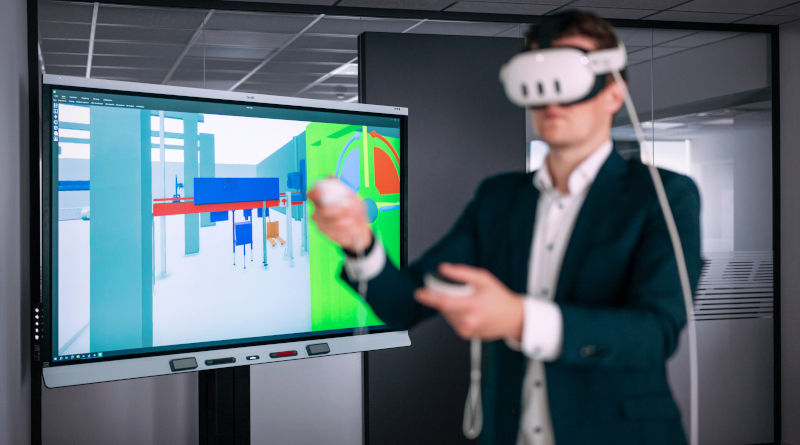3D line design
The KHS Group is expanding its virtual 3D line design software. Various new features have been launched to allow customers to gain a holistic impression of their potential system as early as during the offer phase. After introducing 3D line design to the offer phase two years ago, the Dortmund systems provider has made a key expansion to the software; this KHS service now includes a new generation of mobile laser scanners and technically optimised VR goggles.
Quick and precise surveys by mobile laser scanner
What’s known as laser scanning enables all interfering contours in the production shop to be precisely surveyed and recorded. To this end, the scanner logs all possible obstacles in minute detail. “If all the customer has are 2D drawings that are 20 to 30 years old and often incomplete, this can lead to a number of unpleasant surprises. During the order phase or, in the worst case, at the last minute during commissioning, ventilation systems, columns or other obstructions may suddenly appear that hamper the ingress of our lines and machines,” explains Patrick Bürger, head of Plant Design at KHS. In using state-of-the-art 3D laser scanners, KHS directly eliminates this source of error at the initial planning stage.
Up until very recently, KHS used stationary laser scanners in the 3D line design process that were mounted on a tripod. In order to record the space available in the entire hall, the scanners had to be moved to a different place and readjusted after each separate image had been taken. The new generation of laser scanners considerably simplifies and speeds up this process. Operation is intuitive. “You simply hold the scanner in your hand, like a smartphone with a camera and video function. As you move around the hall, the scanner takes 270° pictures of your surroundings. On site, we now only need about 20% of the time we used to for image capture plus post-processing,” Bürger states. “The result is a scatterplot that gives the exact data for the room.”
Efficient design review through new VR technology
Furthermore, the VR goggles themselves have also undergone significant further development. Whereas to date a relatively elaborate external tracking system with two or four calibratable support stands was used, KHS now works with tracking incorporated into the goggles. “We only need the goggles, two joysticks and a laptop to display the data. This means that the setup is much simpler and available much more quickly,” Bürger continues.
The same applies to conversion of the data recorded by the scanner to a VR-compatible format, he adds. “With the improved system, data processing now only takes a few minutes, whereas in the past several weeks were needed.” Any type of modeled KHS line can therefore be projected onto the VR goggles very quickly – direct integration into the scatterplot from a laser scan is now even possible. This comes with a benefit. “We can let our customers experience virtually what their potential new line or machine will actually look like and how it will fit into the existing space on site early on in the planning process.” This boosts planning security and builds up trust.
Combination of VR and laser scanning
This synergy of mobile laser scanners and VR goggles with integrated tracking is new to the industry, claims Bürger. The service has already been put to successful use for a number of clients in the German-speaking parts of the world. “By the end of the year, we’re aiming on implementing this worldwide, so that beverage producers can profit from the benefits in real time also at all of our international sites,” Bürger concludes.

